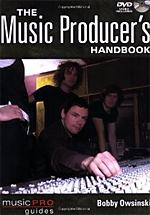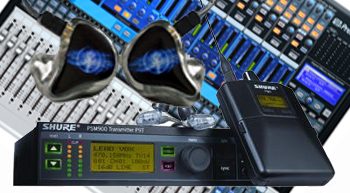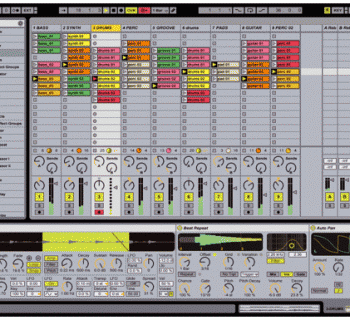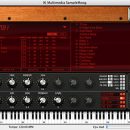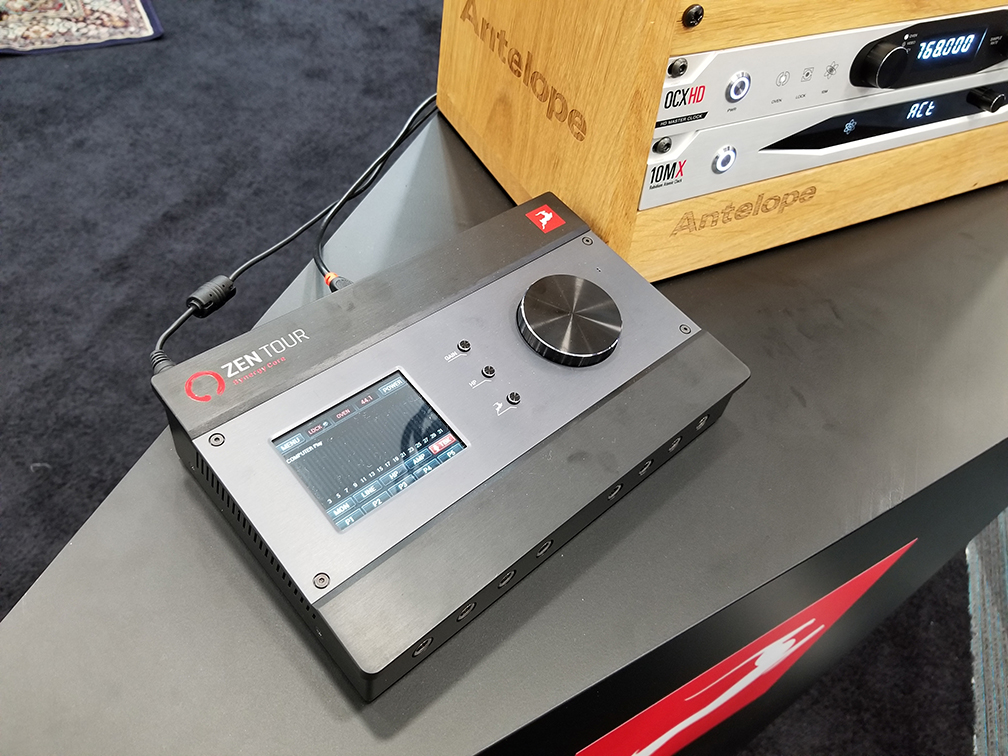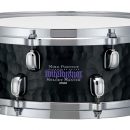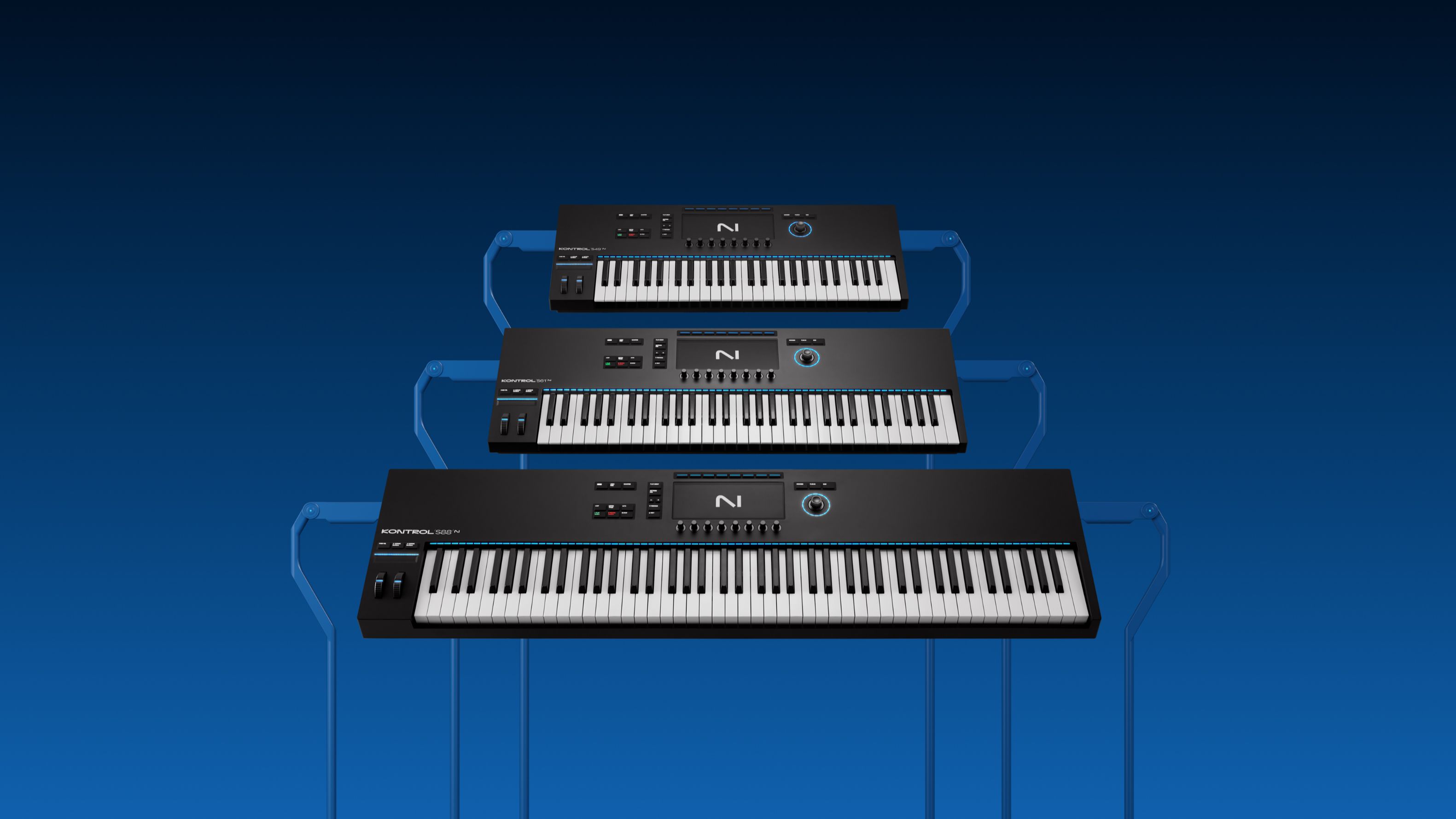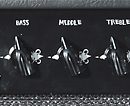An excerpt from the book, The Music Producer's Handbook
Even if a musician is completely comfortable with his environment and headphone mix, there are additional things you can do to help him take his performance to another level. Unless you’re a studio pro, most musicians can be very self-conscious about what they’re playing, especially after hearing a playback that uncovers some flaws they were unaware of until that moment. It’s important that their confidence doesn’t flag, and it’s directly up to you to keep that from happening. Here are a few tricks that can help.
• Stay positive. Regardless of how badly things might be going, how off-key someone is singing, or how out-of-the-pocket someone is playing, never be negative in your body language or your comments. Remarks like “You suck” or “That really sounds bad” never help the situation, and can even completely undermine a performance. If something isn’t going as well as you think it should, give the player a reasonable chance, sit him down for a listen in the control room, and then firmly but respectfully describe why the part isn’t working.
• Explain what’s wrong. Players hate it when they’re told to “Do it again” without being given any explana¬tion as to why you think what they just played wasn’t good enough. If the take wasn’t a keeper for some reason, explain what was wrong in a kind and gentle way. Statements like “I think you have a better one in you” or “I’ve heard you play it with more excitement before” might work if you can’t put your finger on the problem, but players appreciate it if you can be specific so they can concentrate on that part the next time they play it through. “You’re falling behind the beat every time we come out of the chorus,” is an example of a specific statement. If the player continues to get it wrong, make sure you play the part for him so he can hear it clearly and understand what you’re going for.
• Keep the studio talkback mic on. Communication is one of the most important yet often overlooked parts of a successful session. Players hate it when they’re speaking to you from the studio and either you’re unaware that they’re trying to get your attention, or you simply can’t hear them. Make sure that the engineer puts up a dedicated talkback mic in the studio and that it’s turned on immediately after every take. It’s important that you don’t miss a single word.
• Keep the control room talkback mic on. Players also hate it when there are long periods of silence from the control room after a take. They might see a conversation going on, but if they can’t hear it, they can get insecure and feel isolated. You may be having a conversation about what kind of take-out food to order, but as far as the player can tell, you’re talking about how bad his performance was and how you’d like to replace him. Get rid of the insecurity by latching the control room talkback so he can hear you all the time between takes. Once again, communication is the key to a successful session.
• If a player asks to play a part again, let him. You may think that the player just nailed the ultimate take, but if he feels he can play it better, he usually can. Players inherently know when they’ve messed something up, were late on a chord, mis-fingered or ghosted a note, or slowed down during a roll. Maybe you didn’t hear it, but the player knew it. Let him go again. Thanks to digital recording this is a much easier decision to make nowadays than it was back in the analog tape days. Back then, you might only have space on tape for a single take, and you could lose a take that was great if the next take didn’t work. That kind of pressure on the producer has now been lifted, thanks to your favorite DAW.
Getting the Best out of Singers
One of the hardest things about making a record is trying to record a vocalist who is uncomfortable. Even a seasoned pro sometimes can’t do her best unless the conditions are just right. Consider some of these suggestions before and during a vocal session.
• Make sure the lighting is correct. Most vocalists prefer the lights lower in the studio and the control room when they are singing.
• A touch of reverb or delay in the headphones can help the singer’s comfort level with the headphones mix since it makes the vocal sound more like the finished product.
• If you need to have the vocalist sing harder, louder, or more aggressively, turn down the vocal track in the phones or turn the backing tracks up.
• If you need to have the vocalist sing softer or more intimately, turn his or her track up in the phones or turn down the backing tracks.
• Keep talking with the artist between takes. Leave the talkback on if possible. Long periods of silence from the control room can be a mood killer.
• If the take wasn’t good for whatever reason, explain what was wrong in a kind and gentle way. Something like “That was really good, but I think you can do it even better. The pitch was a little sharp.” This advice goes for just about any overdub, since players generally like to know what was wrong with a take rather than receiving a “Do it again” blanket statement.
• Keep smiling.
The Three Ps: Pitch, Pocket, and Passion
When it comes to vocals in the studio, the three Ps are what a producer lives by. You’ve got to have all three to have a dynamite vocal. And while pitch and pocket problems can be fixed by studio trickery, if you don’t have passion, you don’t have a vocal. Let’s take a look inside the three Ps.
Pitch
Staying on pitch means singing in tune. And not just on some of the notes—on every single note! They’re all equally important. Singing in tune requires real concentration and awareness. If you know your singer has a constant pitch problem and tends to sing either sharp or flat, there are some really simple things to try that might help.
• Singing sharp is usually caused by the power of your voice blanking out any background pitch reference. You’re singing too hard to hear yourself! The fix is easy. Just turn up the lead vocal in the headphones a little.
• Singing a touch flat is easily fixed by asking the singer either to lift his eyebrows or to smile. Smiling is not only recommended, it’s required—and that’s because it provides proper relaxation of the facial, cranial, and neck muscles (this is where it helps to have a good sense of humor).
• Correct head position and correct position of the abdomen are needed to have enough air to stay on pitch. Learning correct positioning is the best reason for any singer to consult a vocal coach for at least a few lessons.
• The more relaxed a singer is, the easier it is to hit the higher notes in her range. Yawning is a recommended warm-up exercise because it promotes relaxation. Pitch also means following the melody reliably. There’s a trend these days to scat-sing around a melody, and while that might be desirable in some genres, it doesn’t work in any genre if it’s done all the time. Scatting might show off a singer’s technique and ability, but a song has a melody for a reason: that’s what draws the listener in, that’s what they can sing to themselves, and that’s usually what they want to hear.
The Singer Must Hear Herself
In order to stay in tune, a singer must hear herself. How much she can hear herself will determine if she can stay on pitch.
As I stated previously, some vocalists sing sharp when they sing too hard. They push themselves over the top of the correct pitch when they can’t hear themselves in the headphones. The solution is to have either more vocal or less of everything else in the phones, but be aware that pitch and timing problems can also occur if you hear too much of yourself in the mix.
• If your vocalist is singing flat, give him a little less of himself or more of everyone else in the mix, since it’s not unusual for pitch to change with intensity. Less vocal makes you want to sing harder (and possibly raise your pitch slightly) and vice versa.
• Sometimes the mix can be too dense with instruments, and thinning it out a little can help correct pitch problems. First, add more bass (the root of all chords) and kick (the root of all rhythm) to help with pitch and pocket. Next, turn down anything that is heavily chorused and turn up anything that has a more “centered” tonal frequency (like a piano).
• Sometimes listening to only the rhythm guitar instead of multiple guitar parts (if there are more than one guitar part) can be helpful, since some vocalists can hear their own pitch better when singing with a simple tonally centered instrument than when singing with screaming guitars or airy synth patches.
Pocket
Being “in the pocket” means singing in time and in the groove, or rhythm, of the song. You can be on pitch, but if you’re wavering ahead or behind the beat, it won’t feel right. All of the things advocated throughout this book that help instrumentalists apply to vocalists as well. Concentrate on the downbeat (beat 1) to get your entrances. Concentrate on the snare drum (beats 2 and 4) to stay in the pocket.
Quincy [producer Quincy Jones] used to say that some singers have it in the pocket of their voice. Supposedly Michael Jackson had such an amazing pocket that he could sing a line and you could build a groove around it. — Frank Fitzpatrick (Jill Scott, Dave Hollister, High School Musical)
Passion
Passion is not necessarily something that can be taught. To some degree, you either have it or you don’t. What is passion? It’s the ability to sell the lyrical content of the songthrough performance. It’s the ability to make the listener believe in what you’re singing and feel that you’re talking directly to them and not anyone else. And passion can sometimes trump pitch and pocket. A mediocre singer who can convey his emotion through his voice is way more interesting to listen to than a polished singer who hits every note perfectly but with little emotion. In fact, just about any vocalist you’d consider a “star” has passion, and that’s why he or she is a star.
On stage, passion can sometimes take a backseat to stamina, since you have to save yourself for a whole show and you can’t blow it all out in one song. That’s why many singers have only one or two big “production numbers,” when they totally whip it out. But in the studio, there’s never any cruising. You’ve got to give all the passion you can give to every song. A few paragraphs ago I said that you either have passion or you don’t, but sometimes a singer has it but doesn’t know it, and it’s the job of the producer to pull passion out of her. That could mean getting the singer angry to stir some emotion, building her up by telling her how good she is, or making her laugh to loosen her up. Anything to sell the song! But once she knows how to summon it up from inside herself, she can do it again and again.
The 3 P's of Vocals
• Staying in pitch means singing in tune and reliably following the melody.
• Pocket means singing in time and in the groove.
• Passion is the ability to sell the lyrical content and melody through performance.
Background Vocals Need Attention, Too
It’s too easy to take background vocals lightly and say “Just throw a background part on this” or “Hey, can you sing a little background here?” But background vocal parts are so important that they can make the difference between a record sounding polished or sounding as though it just came out of the garage. Background vocals are integral parts of the song that require the same amount of attention as the drum, bass, guitar, keys, and lead vocals get. In fact, a bad background vocal part can easily sink a recording that otherwise sounds great.
You can’t have someone sing background just because they’re used to doing it live. If it’s a part worth doing, then it’s a part that must stand on its own. It either sounds great or you can’t let it get by.
Harmony Vocals Take More Time
Unless you’re hiring in a vocal group whose members sing with each other all the time or the lead singer is doing them all herself, it usually takes more time to get a blend on harmony vocals than you might think, especially if the group is composed of singers who haven’t sung together before. Regardless of the amount of time they’ve spent together, here are some tricks to make those harmony vocals sound as tight as possible.
Phrasing Is Everything
Singing together means that you really have to sing together—exactly. Each vocalist has to sing exactly the same way as the other singers, complete with the same inflections, slurs, attacks (starts), and releases (stops). Usually this means that one vocal part will be the reference part, and all others will follow. The way that I’ve seen great background singers work is for one to say, “Sing it to me. Show me what you’re doing,” then the others would try to match that exactly. It works for them, and it will work for you, too.
Attacks and Releases
Whether you’re playing it or singing it, attacks and releases are the secret to tight music. While it’s usually easy to get the attack part (where everyone starts at exactly the same time), the release part (everyone ending at the same time) is often overlooked. The releases are just as important as the attacks, and polishing up this one area will make a vocal group sound so tight you won’t believe it. So remember, everyone starts and stops at the same time. A great example of a background vocal with a tight release is the end of the theme song for the television show American Dad. Listen to how tight “Good Morning USA” is, especially the end of the phrase. That’s what you’re going for.
Gang Vocals
Gang vocals are background vocals in which the vocalists sing the same thing that the lead singer sings, and in unison. This usually happens in the chorus. An example can be heard in Kiss’s classic hit “Rock and Roll All Night.” It’s not uncommon for a band to get some of its members who don’t usually sing to sing for a gang vocal. You might think that singing a gang vocal would be easy because you don’t have to worry about a harmony, but that can be a big mistake, because you still have to be concerned about pitch and phrasing, just like with harmony vocals. Don’t make that mistake; when working on vocals, place the same importance on all parts. Every single part needs the same attention as the lead vocal. Remember, if it doesn’t sound great, work on it until it does, try something else, or eliminate it.
Background Vocals
Background vocals are just as important as any other part and require the same attention.
• For harmony vocals to blend well, exact phrasing is everything.
• Gang vocals that sing in unison with the lead vocal require the same attention.
Excerpt taken from Bobby Owsinski's The Music Producer's Handbook,, available now from Hal Leonard Books.

